Salt Varieties from Around the World

Applewood Smoked Salt | Celtic Salt | Fleur De Sel | Hawaiian Black Salt | Hawaiian Red (Alaean) Salt | Hickory Smoked Salt | Himalayan Pink Salt | Indian Black Salt | Iodized Salt | Kasilof Sea Salt | Kauai Pa’Akai Salt | Kosher Salt | Maldon Sea Salt | Mediterranean Sea Salt | Pacific Salt | Real Salt | Sel Gris | Two Seas Salt
SALT. Our body needs it. (Or rather it needs about 1500 mg of sodium per day.) It is used to flavor foods and to preserve them. The possession of salt and the control over it’s distribution has literally changed world history over and over, again. And yet we seem to take it for granted.
This simple edible rock, or mineral more accurately, is one of the most valuable, overstated, over used, and under appreciated items the common kitchen has ever beheld. Here, I will attempt to break down a few things about the use of salt in the kitchen, and the many types there are to behold. May your foods be ever so tasty and well seasoned! Let’s begin!
Your basic salt, I hate to call it ‘that cheap crap,’ that you find on the table in every diner in America, is Fine Grained Iodized Salt. It became ionized in 1924 when it was realized that people need a trace amount of iodine in their diet, and what better away to ‘help’ us along than to add it to the most common commodity everyone uses. (I suggest adding more seaweed, lean fish, and egg yolks to your diet instead, seasoned with sea salts which have trace amounts of iodine naturally.)
I hate to say it, but this cheap iodized crap, is what most kitchens also use to season their food. It’s fine grained and blends, dissolves, and spreads well within in a multitude of recipes. It’s cheap. Very Cheap. Did I mention that I think it’s crap? The only reason that I have this 49-cent junk in my house… yes I literally label it as ‘junk salt’ on the shelf, is to make playdough for children. Even then I tell them, “Don’t eat that crap salt stuff.”
Have I made my point clear?
Next you have Kosher Salt. This is Junk Salt’s more liked, slightly better cousin. They call themselves ‘coarse,’ but in my experience it doesn’t compare to the coarseness of sea salt. I find kosher salt to simply be a non-iodine version of Junk Salt. It isn’t even named kosher for being kosher, but rather for it’s use in dry-brining meats to meet kosher standards. Basically the title ‘Kosher’ refers to the size of the grains.
So lets move on to what I use daily. A simple, and still rather cheap, Mediterranean Sea Salt. I’m not picky about brand. I don’t care if it’s organic. I do usually choose fine grain through. I use this in my baking, frying, seasoning, and sauces. You can use to finish your dish. The brand I have currently states it comes from Torrevieja, Spain. Awesome. That’s great. Like I said, I’m not picky about where it comes from I just don’t want to use that junk stuff.
NOW, for color, and creativity, and pizazz, and special touches?! Along with many multi-purpose options, that is where some of the salts I will show you below come into play. There is no need to spend $9 and ounce on a salt that you will toss into your sauce. Finishing salts add color, flavor, and texture to a finished dish. They are fun. They are beautiful. They are what make your food presentation artistic. Use them as such. Display them on your table. Love them. Enjoy their glorious background stories. Enjoy all that salt has brought us in this story of the world!
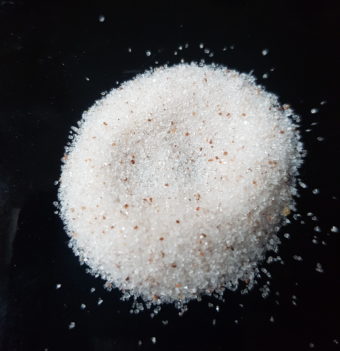
Real Salt
A Mined Multipurpose Salt
The name implies that all other salts are ‘fake’ salts, but this is not the case. REAL salt is just the brand name of a salt that has been mined from a single salt deposit near Redmond, Utah. It starts at 30 feet below the surface and extends as deep as 5000 feet. Real Salt is very proud that it’s coming in is purest chemical state; completely untouched by the effects of human activity on the earth and its waters. That doesn’t mean, however, that it isn’t sea salt. In fact, just like the pink Himalayan salt, this underground bed of salt is actually from an ancient inland sea.
REAL Salt claims that the mineral content of their salt, (over 60 trace minerals,) makes for a less bitter, and even sweeter tasting salt than others’. Pictured here is their very fine grain, but they sell kosher and coarse grain as well. You can use this salt in the cooking of any dish, as well as fishing it.
Interesting fact: It is this salt that became a major player in the decision for the Mormon travelers to finally settle in Utah. It would supply them with the ability to preserve foods, as well as trade income.
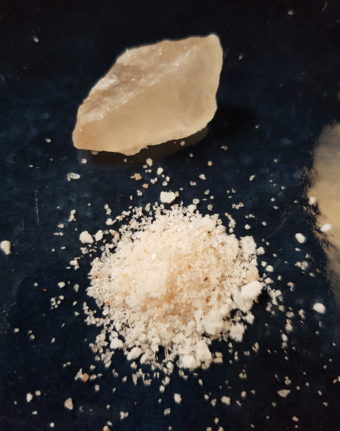
Himalayan Pink Salt
A Mined Salt, Excellent for Multipurpose and Finishing
Himalayan pink salt is all the rage right now, so I’m sure you’ve heard of it, but the knowledge of this underground gem has been known by the common world since at least the 4th century BC, and mining in the area has been documented to date back to the 1200’s. Speaking of, where exactly in the Himalayas does one find this beautiful salt? NOT in the Himalayas! Actually, most of it is mined in Pakistan. Though only a couple hundred miles from the world’s tallest mountain range, the name ‘Himalayan’ is quite simply a marketing ploy. So, is it the name or the amazing color that draws you to it?
Even if you were dooped by the name rest assured that the color isn’t a scam. Although some salts from the area come nearly transparent or classic white, most range in color from light to dark pink, and even beet red. This is due to the particular make-up of trace minerals found within, (as many as 84) and probably most influenced by the presence of iron oxide. No additives here.
There is a lot of hype that this pink salt has more health benefit than other sea salts. I’m not inclined to root for one sea salt over another or believe that color magically brings healing properties, however, I do really like this salt for both cooking and finishing. It’s pretty and is now being marketed very affordably for daily, all purpose, use.
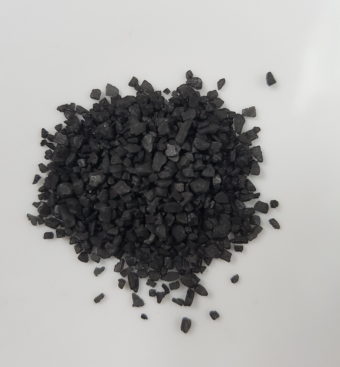
Hawaiian Black Salt – Hiwa Kai
A Finishing Sea Salt
This black colored salt is often labeled as ‘Lava Salt,’ and I find this to be very misconceiving. Perhaps at one time the natural salts gathered by the people of Hawaii contained amounts of lava which led to its dark color, but at this point, Hawaiian Black salts are actually just sea salt that has had charcoal added, usually collected through a process involving burned coconut husks.
As for the title ‘Hiwa Kai?’ It appears that translated into English this may mean ‘hiking’ in Hawaiian, as where the baby name Kai by itself means ‘of the sea.’ Interestingly, Hi Wa Kai (ひわ かい) in Japanese means ‘or confidential.’ Perhaps they are trying to keep it a secret that there is no lava in black lava salt?!
Either way this is a wonderful finishing salt. I hate to say that it’s value lies in novelty, but come on, how can beautiful black crystals of salt atop your perfectly arranged dish not bring the ‘wow’ factor?
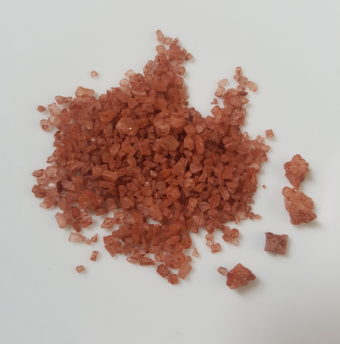
Hawaiian Red Salt – Alaean Salt
A Finishing Sea Salt
In much the same way as it’s black color enhanced cousin, Hawaiian red salt is not naturally red. Now there are some sea salts that do have natural amounts of red or pink, but the deep red of this salt comes from the addition of Alaean clay. Unlike the lava-less black salt above, this clay is actually volcanic. Its redish color comes from, you guessed it, heavy amounts of iron oxide.
The tradition of alaea salt goes back for many generations on Hawaii, having been used to purify and bless tools, canoes, homes, and temples. Later it came to be produced using European methods, bringing income to locals through trade with American fishermen. It is a sort of yin-yang mixture, where the red clay represents kane (kah ney), man, and the white salt wahine (wa he nee), woman. A deeper red salt is said to be of higher quality.
This is a beautiful finishing salt for a variety of dishes. The Hawaiians commonly use it for kalua pig, jerky, and poke.
Kauai Pa’Akai Salt
A Multipurpose Sea Salt
For this very special salt you will probably need to get to know someone from Hanapepe, Kauai, personally. I’ve heard that they produce a wonderfully fragrant and sweet salt on the island, using a long, very traditional process, but since it’s always a family affair it isn’t considered ‘food grade,’ so you won’t ever find it on the store shelf. …at least not the real thing.
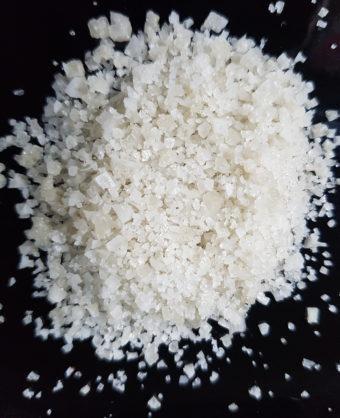
Celtic Salt
A Multipurpose Sea Salt
Celtic Sea Salt is a brand name. This name comes from the original inhabitants of central Europe, the Celts, as the company was founded using sea salt collected off the Brittany coast of France. With the expansion of the company, however, they have since began collecting salt from additional places, including Guatemala and Hawaii. This means that you may not know where the salt in your bag came from, but you can expect a certain quality and texture.
The Celtic salt company prides itself on bringing quality salt to your table. Their salts are certified Kosher and not just kosher based on grain size as mentioned in my introduction. They have a very high mineral density, leading to a lower sodium content than many other kinds of salt.
One of the specific attributes of their salts can be seen in the greenish tinged Light Grey Celtic Salt. (Also see Fleur de Sel and Sel Gris below.) This salt, and many of their others, has a bit moisture to it, making it unique from many other brands. The color is due to the clay lining of the salt bed, and the moisture comes from an extra amount of brine they allow to stay intact. Many find it to make for a more inviting and flavorful salt.
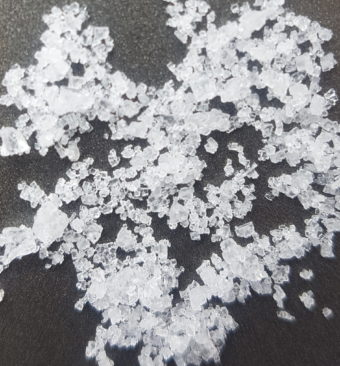
Fleur De Sel
A High Quality Finishing Sea Salt
This is a type of salt. Historically, to make sea salt, sea water is slowly evaporated in an open-air salt bed until only the salt remains. On a perfectly sunny day with a very specific type of wind this can mean that the surface water evaporates at just the right rate to leave behind beautiful, floating, flower shaped, salt crystals. For thousands of years this salt was discarded. It was believed that it inhibited the evaporation process, slowing the drying time for the salt remaining in the water. …Except in France, where it was given the name Fleur de Sel, or Flower of Salt. Here they had women specially trained with the delicate skill needed to collect this extra flakey salt, and it was prized. When the market for specialty salts started taking off, many other common producers of sea salt began to collect their own fleur de sel, or flor de sal in Portuguese, and ανθος αλατιού in Greek. Now you can not only find varieties from all over the Mediterranean, but also from the coast of the Americas, ranging all the way from Canada to Brazil.
Fleur de sel remains one of the most expensive types of salt, and the purest whites are the most desired. With a very consistent grain size, it is a finishing salt that should not be used for cooking but rather as a garnish and to flavor a finished dish. I agree that it is true, these delicate flakes do not dissolve as fast as your average salt and therefor can be enjoyed on the tip of one’s tongue for longer.
(To be totally honest, the Maldon Salt I talk about lower down is quite a bit cheaper and even more beautiful. If you want ‘the best of the best’ go for Fleur de Sel, but if you want a more practical option for ‘fancy salt’ get yourself some Maldon.)

Sel Gris
A Multipurpose Sea Salt
Hopefully having read about Fleur de Sel above, you will then understand that Sel Gris is the darker, slightly grey as the French name states, moister, brother of Fleur de Sel. While Fleur de Sel is delicately collected from the surface with a very small yield, Sel Gris is raked, also carefully, from under the surface into piles along the edge of the salt pan to dry. The difference in color is due to it’s proximity to the clay lining of the pool.
Less expensive than it’s flowery relative, Sel Gris is also more versatile. It is generally sold as the coarse grain in which it was collected, with a relatively high moisture percentage. From there it can also be ground finer. It’s distinctive briny flavor makes it perfect for flavoring foods as you cook or bake, and it dissolves well. The added flavor of the mineral-rich clay also makes it a great choice for grilling and roasting. Lastly, the coarse grain makes for a beautiful finishing salt. I’ll be it coarse, this salt really is a good all-around choice for any kitchen.
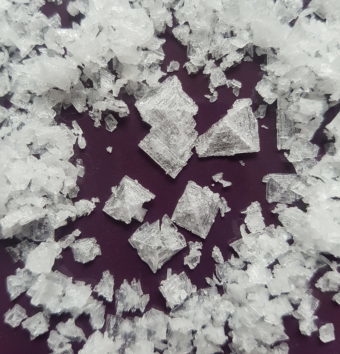
Maldon Salt
A Finishing Sea Salt, Good for Multipurpose
Maldon Salt is, well, ‘Malden’ and ‘salt.’ It’s a location, it’s a flaky style, it’s the brand name for all three combined, and it has become incredibly, increasingly, popular the entire world around in the last 10 years. Starting as an English coal town with a salt problem they are now beginning to dominate the culinary world selling 10 million boxes a year. Many of these are even being imported by countries with their own history of great salt making.
So, what is it about those flakes? The texture of course! They are easy to pinch and feel great between your fingers. It’s known to have a wonderful pure salt flavor, and the beautiful structure makes it perfect for finishing dishes of any type. While many people swear by it for cooking and baking as well, a lot of folks simply like the novelty of having ‘fancy’ salt on their table. The relatively cheap price tag and guaranteed consistency definitely help make the sale.

Applewood Smoked Salt
A Multipurpose Sea Salt, Great for Finishing
This is, as the name implies, smokey! I’ve found Frontier Co-Op’s very consistent applewood smoked salt to be very easy to find it both natural food stores as well as our common grocery health department. It’s a medium grained salt, harvested from Maine, that has been smoked over real smoldering applewood logs from Yakima, Washington. Applewood is already one of the most common options used for smoking and grilling, so the flavor is familiar, and with a decent sized grain and creamy brown color this salt is perfect for finishing. Don’t forget to try a small sprinkle on a good quality chocolate bar.
Applewood smoked salt can also be used, very successfully, in a blend or rub. For those who don’t have either the space for it or the affinity to grill, using a smoked salt and/or pepper in your herb and spice mix can be just the trick to bring that out-of-doors flavor to your warm and comfortable kitchen table. It’s also a fantastic addition to homemade barbecue sauce, jerky brine, au jus, ham glaze, baked beans, or chili.
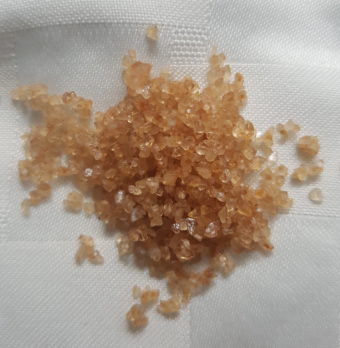
Hickory Smoked Salt
A Multipurpose Salt, also Great for Finishing
I’ve noticed that not all hickory smoked salts are the same. There are some that simply mix your generic hickory flavored liquid with a salt of choice and call it ‘hickory smoked.’ Then there are the real deals; the company that takes the time and effort to actually smoke their salts over smoldering logs. You’re going to see this reflected in price. Honestly, if you see ‘smoke flavor’ on the ingredient list, then you could just as well make your own; mix salt and liquid smoke, let it dry on a sheet pan, done.
Hickory smoked salt can be used in all manner of burger or meat loaf, and on any kind and cut of meat. As mentioned with applewood smoked salt above, it’s great mixed into spice and rub blends, and works particularly well with vinegar to make sauces; think tomato or mustard based. And of course there are the classics: jerky, chili, au jus, and pulled pork sandwiches.
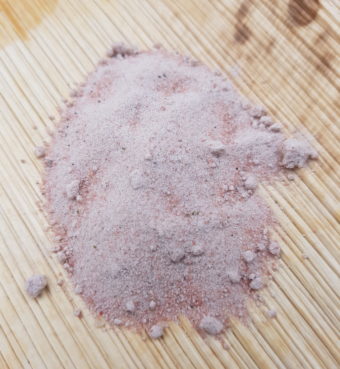
Indian Black Salt – Kala Namak
A Very Distinct Mined Salt for Multipurpose and Finishing
First, you may be asking why it’s called black salt, when it is obviously a dusty pink. If you were to have a large rock of this salt you would be able to see immediately it’s very dark, though also translucent, color. Many of the salts on this list are valued specifically for their color. This salt is beautiful, but it’s the very distinct flavor of Indian Black salt that makes it gain popularity. Sulfur. You know, that smell that reminds us of farts? It also happens to be the major player in making eggs taste, well, like eggs. So why would you want to keep a stinky egg-fart salt on hand? It actually does and incredible job of adding a nice egg flavor to any egg-less dish. This makes it of particular value for vegetarians and vegans who won’t consume eggs. Carnivore or not, it’s also just a really fun salt to have on-hand for surprise tastings with your friends, and it’s really quite cheap, but you might have to find an international market to get a hold of some locally.
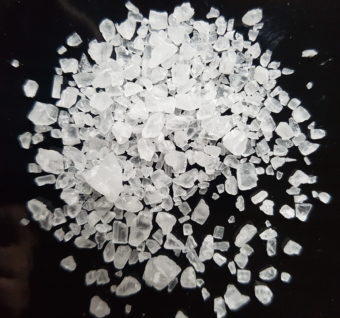
Pacific Salt
A Multi-Purpose Sea Salt from New Zealand
Given, you may have sea salt gathered from some other place in the pacific ocean, including many on this list, and it would also be considered pacific salt, but there is a very common brand of sea salt, sold both contained and in bulk, that is harvested from the beautiful northern shores of New Zealand. Like most other sea salts, the sea water is left to evaporate in large salt fields, using only the sun and wind. It’s a great table salt and perfect for cooking. I find that the bulk bin salt seems to be more coarse, while the option sold on the shelf is very fine. You can then decided exactly what grain you desire for your specific needs. With a wonderful, slightly ocean flavor, this salt is incredibly clean in color and almost reminds me of diamonds.
Two Seas Salt
A Lower Sodium Sea Salt for Cooking and Baking
I don’t have a photo of this salt for you as of yet, though it is easy enough to Google. This type of salt is also a particular brand, and I’ve included it on this list for two reasons. First, they gather their salts from the Dead and Red Seas, which is both really cool and probably means it has its own unique flavor. Second, because of the mineral rich content of these two seas this naturally produced sea salt is both lower in sodium and higher in potassium. These qualities can be of particular value for someone who is trying to reduce their blood pressure through a reduced sodium diet. It is also particularly helpful that the ratio for using this salt is the same as your typical salt. If the recipe calls for 1 teaspoon of salt, you use 1 teaspoon of Two Seas.

Kasilof Sea Salt
An Inspiration to Us All
Who has Alaskan Kasilof Sea Salt? ME! It was dried personally by a family friend. Why include such an oddity on this list? It’s here, not because it’s a common commodity, but as a simple reminder that locals of any and every sea town can, and probably do have their own harvest of sea salt, even if it’s just for personal use. This means that you, too, can produce YOUR own sea salt! Try different areas. Do the grains come out a different color or texture? When you travel ask the natives if there are any locals who collect sea salt in the area. You might just open a whole world of intrigue and curiosity through this simple gesture.
If you have enjoyed this little journey with salt, I might highly suggest checking out the very detailed book, ‘Salt: A World History
‘ by Mark Kurlansky. It walks you though world history as it was created, affected, and changed by the human demand for salt. It is a wonderfully scholastic read!

